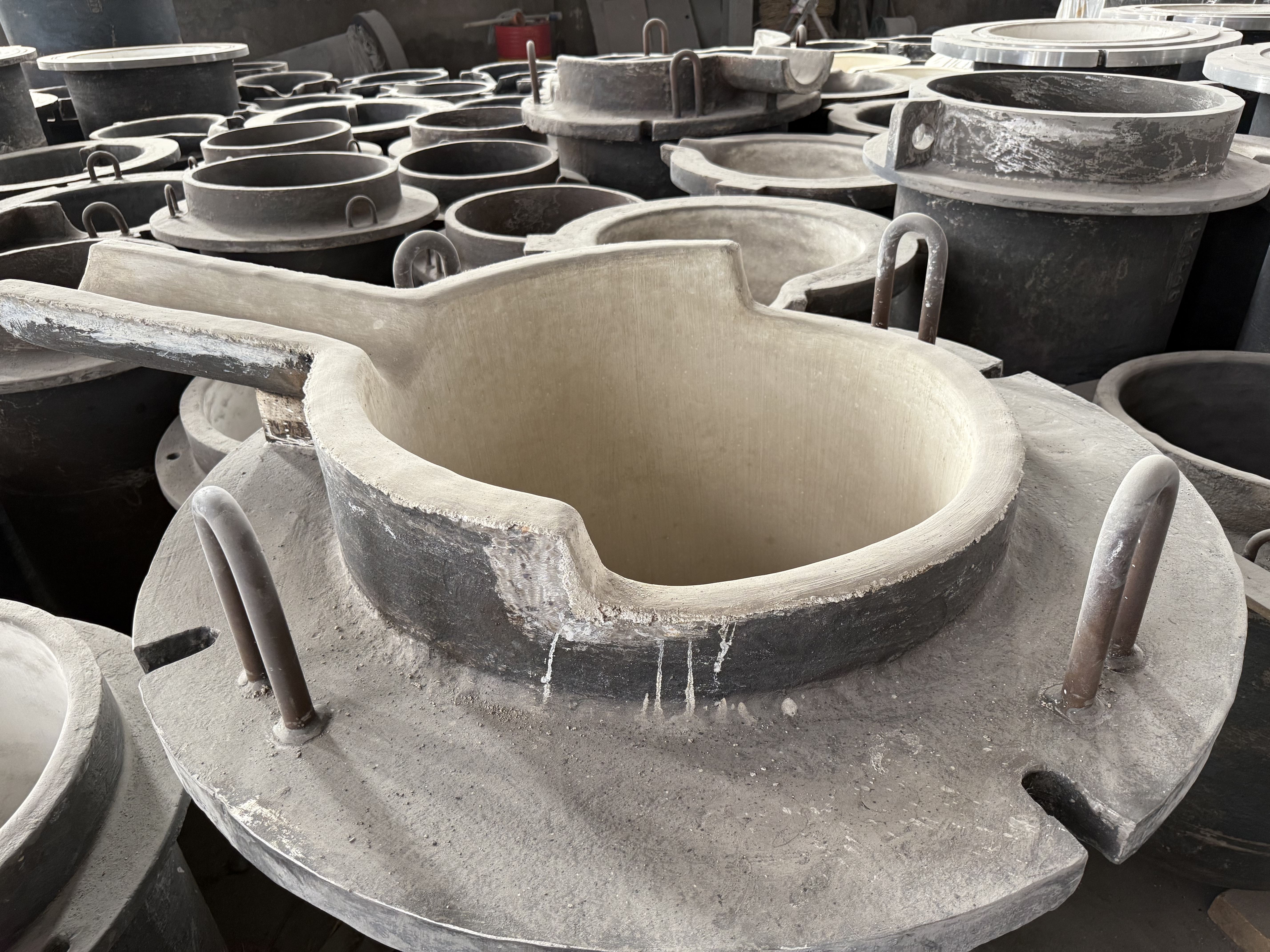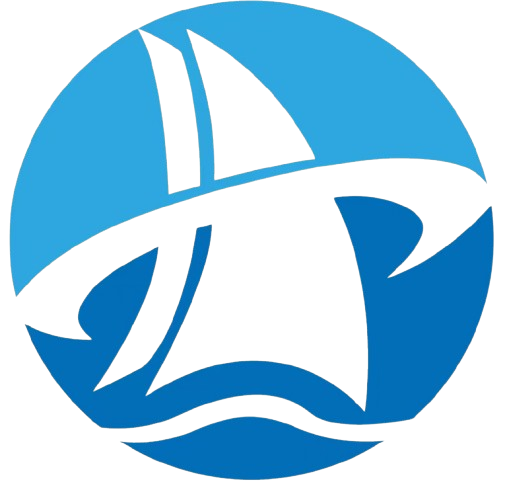Choose Crucible Material Based on Metal Type
Choosing the right crucible material based on the type of metal you are working with is crucial for maintaining efficiency and ensuring product quality.
Graphite Crucibles for Non-Ferrous Metals
Graphite crucibles work really well when melting non ferrous metals like aluminum, copper or even gold. What makes them so good at this job? Mainly because they conduct heat exceptionally well and resist most chemicals thrown at them during processing. These crucibles handle extreme heat without breaking down, something that matters a lot during those lengthy melting operations common in many factories. Studies show that switching to graphite crucibles actually leads to better metal quality since there's less contamination happening throughout the melting process. The end result? Cleaner, higher quality metal products. No wonder why so many industries rely on graphite crucibles across various manufacturing settings where getting consistent results matters most.
Ceramic Crucibles for High-Temperature Applications
Ceramic crucibles work really well at super high temperatures, making them essential for things like melting iron-based metals or working with glass. These containers can handle sudden temperature changes much better than graphite ones, so they last longer when exposed to extreme heat over time. The reason? Advanced ceramic materials that don't break down easily when chemicals attack them during processing. For industries dealing with tough manufacturing tasks, this means ceramic crucibles become go-to equipment for many specialty applications. Most manufacturers rely on these properties to ensure consistent results in their high heat operations, since keeping temperatures stable throughout the process makes all the difference between success and failure.
Properly Size Your Crucible for Efficiency
Matching Crucible Capacity to Batch Volume
Getting the right crucible size to fit the batch volume makes all the difference when it comes to casting efficiency. When the crucible matches what's needed, there's less wasted material and fewer times going through the melting cycle, which saves both time and resources. Going too small means having to melt things more often, and that eats up extra energy while slowing down production. The whole sizing process usually depends on things like how dense the metal actually is and exactly how much weight needs to come out at the end. Taking these numbers into account ensures the crucible holds everything required without messing up the whole casting operation. Most experienced casters will tell anyone who asks that getting this right from the start prevents headaches later on.
Ensuring Furnace Compatibility
Getting the right crucible size to fit furnace dimensions matters a lot when it comes to melting efficiency and proper heat distribution. Most furnaces actually come with set requirements for crucible sizes they work best with. Picking the wrong one can lead to all sorts of problems from messed up temperature control to actual damage from too much strain on the crucible itself. Checking what the equipment maker recommends gives manufacturers a good starting point for matching crucibles to various furnace types. When this compatibility check happens upfront, it makes a real difference in how well things melt and lasts longer too. Both the crucible and furnace tend to have better lifespans, which means fewer replacements and ultimately saves money in the long run.

Prioritize Thermal Shock Resistance
Getting crucibles that stand up well to thermal shock makes all the difference in keeping production running smoothly. When temperatures swing suddenly, these better quality crucibles just don't crack or fracture like cheaper alternatives do, so the whole operation keeps moving without those frustrating stoppages. The savings add up fast when shops avoid having to replace broken equipment and restart processes from scratch after failures. For metal casters especially, picking materials rated for higher thermal shock resistance isn't just about avoiding headaches it's actually good economics in the long run since every hour lost to repairs costs money and delays shipments.
Verify Chemical Compatibility
Preventing Metal Contamination
When it comes to metal casting operations, keeping the end result pure and intact matters a lot. A big part of that equation involves understanding chemical compatibility between materials used throughout the process. Getting this right makes all the difference when it comes to avoiding metal contamination issues during actual casting work. Crucible materials that don't match well with what's being melted inside them tend to create some pretty bad chemical reactions. These reactions mess up the quality of whatever gets cast, often leaving behind impurities or changing how strong and durable the finished piece actually is. That's why most experienced metalworkers stick to crucibles made specifically for particular metals they're dealing with on any given day.
Different metals need different crucibles because mixing them can cause all sorts of problems during melting processes. Manufacturers usually provide compatibility charts that show which crucible materials work well with various metals. Checking these charts before starting any casting job cuts down on chemical reactions between the crucible and melt, which helps keep product quality stable across batches. For shops that want consistently good results from their metal casting operations, taking time to match crucibles properly isn't just helpful it's actually pretty much required if they want to avoid costly mistakes later on.
Assessing Crucible Lining Reactions
When picking out crucibles for metal work, one thing worth remembering is how the lining inside interacts with different metals during processing. Some crucibles have coatings that don't play nice with certain metals, which messes up both the casting operation itself and whatever ends up getting made. Metalworkers need to know about these chemical clashes because they often result in flawed castings or extra cleanup work down the line. And let's face it nobody wants to spend extra money fixing problems that could have been avoided from the start while also slowing down production schedules.
Manufacturers typically offer guidance on selecting crucible linings to prevent common problems during metal processing. Their recommendations take into account what kind of metal is being worked with and point toward appropriate lining options based on experience. When producers evaluate these parameters and match lining materials to the particular metal they're handling, the casting process tends to run much smoother. This reduces the frequency of expensive rework cycles and leads to better consistency across batches. Getting this right at the planning stage makes all the difference in producing quality castings across different metals and alloys used in industrial settings.
Evaluate Structural Reinforcement Needs
Importance of Reinforced Edges
The reinforced edges on crucibles really matter when it comes to how long these workhorse tools last. They handle all the stress from regular use and pouring without falling apart, which means the crucibles stay usable for much longer timeframes. Tests done in foundries show that crucibles with those extra strong edges just don't chip or crack as often as regular ones do. For shops running tight budgets, this matters because they don't have to replace crucibles so frequently, cutting down on both money spent and downtime. Fewer broken crucibles also translates into better productivity across casting operations since there's less interruption waiting for replacements or repairs during critical production runs.
Spout Design for Frequent Pouring
How a crucible's spout is designed really matters, especially for those who need to pour molten materials regularly. When crucibles come with ergonomically shaped spouts, they make pouring much easier to control. Less material spills out this way, which means fewer wasted resources and cleaner work areas. Good spout design cuts down on burns too since hot metal doesn't splash around as much during transfers. Anyone working with these tools should look for crucibles where both performance and safety have been thought through properly. Choosing such equipment makes all the difference in day to day operations, helping metalworkers complete their tasks faster while staying safe from potential hazards.
FAQ
What are the benefits of using graphite crucibles for non-ferrous metals?
Graphite crucibles offer remarkable thermal conductivity and chemical resistance, making them ideal for melting non-ferrous metals such as aluminum and gold. They ensure high-temperature endurance and minimal metal contamination, leading to high-quality final products.
Why are ceramic crucibles preferred for high-temperature applications?
Ceramic crucibles are resistant to thermal shock and chemical wear, making them suitable for high-temperature processes involving ferrous metals and glasswork, ensuring durability and consistent performance.
How does crucible size affect casting efficiency?
Choosing a crucible size that matches the batch volume optimizes casting efficiency by minimizing waste and reducing energy consumption, while ensuring compatibility with the furnace enhances heat transfer and extends equipment longevity.
What is the significance of thermal shock resistance in crucibles?
Crucibles with high thermal shock resistance reduce the risk of breakage when exposed to rapid temperature changes, ensuring consistent production and preventing operational downtime.
Why is chemical compatibility important in crucible selection?
Chemical compatibility ensures that the crucible material does not react negatively with the metal, preventing contamination and preserving the quality of the final product.
How does the design of a crucible's spout influence pouring efficiency?
A well-designed spout facilitates controlled and efficient pouring, reducing spillage and waste, and enhancing worker safety by minimizing the risk of thermal burns and accidents.


